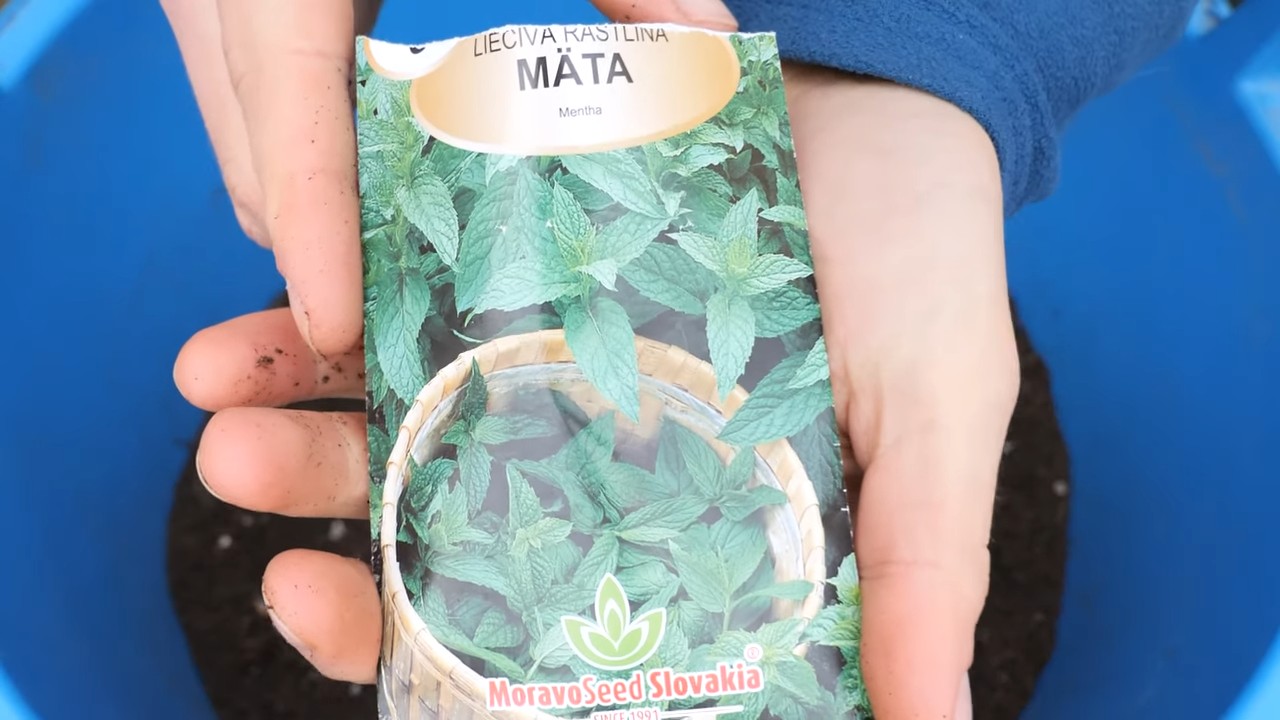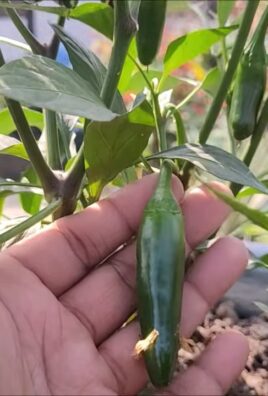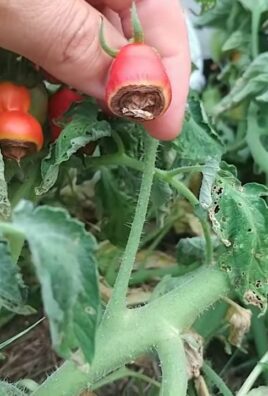Grow Mint at Home with ease! Have you ever dreamed of stepping outside your door and snipping fresh, fragrant mint for your mojito, tea, or culinary masterpiece? I know I have! It’s a simple pleasure that’s surprisingly within everyone’s reach, even if you don’t have a sprawling garden. This DIY guide is your passport to a world of minty freshness, right on your windowsill or balcony.
Mint has a rich history, dating back to ancient civilizations where it was valued for its medicinal and aromatic properties. The Romans, for example, used mint to freshen their breath and flavor their sauces. Today, its popularity continues to soar, and for good reason! But let’s be honest, buying fresh mint from the store can be expensive and sometimes the quality is questionable. That’s where this DIY trick comes in.
I’m going to show you how to grow mint at home successfully, even if you’re a complete beginner. We’ll cover everything from choosing the right container and soil to watering and harvesting techniques. Imagine the satisfaction of creating your own little mint oasis, knowing exactly where your herbs come from and enjoying their vibrant flavor whenever you please. So, grab your gardening gloves, and let’s get started on this exciting journey to fresh, homegrown mint!

Growing Mint at Home: A Comprehensive DIY Guide
Hello, dear garden friends! I love the fresh scent and taste of mint, and there’s nothing better than harvesting it directly from your own garden. Mint is super easy to grow, even if you don’t have a green thumb. In this article, I’ll show you how to successfully grow mint at home, whether in the garden or in a pot. Let’s get started!
Why Grow Mint Yourself?
- Freshness and Flavor: Homegrown mint simply tastes better than store-bought.
- Cost Savings: Once planted, you’ll always have fresh mint on hand.
- Versatility: Mint is versatile, from tea and cocktails to savory dishes.
- Easy Propagation: Mint is incredibly easy to propagate, so you could soon have a whole mint plantation!
- Aromatherapy: The scent of mint is refreshing and invigorating.
What you need:
- Mint seedlings or seeds: You can buy mint seedlings at almost any garden center or order mint seeds online. Popular varieties include peppermint, spearmint, and chocolate mint.
- Pot or garden bed: Choose a pot with good drainage or a sunny to partially shaded garden bed.
- Soil: Use high-quality potting soil or garden soil.
- Watering can or hose: For regular watering.
- Scissors or garden shears: For harvesting and pruning.
- (Optional) Fertilizer: An organic fertilizer can promote growth.
Growing Mint in a Pot: Step-by-Step Guide
Growing mint in a pot is ideal if you have limited space or want to control the spread of the mint. Mint is quite invasive and can quickly spread uncontrollably in the garden.
1. Choosing the Right Pot
- Choose a pot with a diameter of at least 20 cm (8 inches).
- Make sure the pot has drainage holes so excess water can escape. Waterlogging can lead to root rot.
- Terracotta pots are a good choice because they are breathable and the soil doesn’t dry out as quickly.
2. Preparing the Pot
- Fill the pot with high-quality potting soil. I like to use a mixture of potting soil, compost, and a little sand to improve drainage.
- Leave about 2-3 cm (1 inch) of space to the rim of the pot.
3. Planting Mint Seedlings
- Carefully remove the mint seedlings from their pots.
- Loosen the roots a bit before planting them in the pot.
- Plant the seedlings as deep as they were previously in their pots.
- Gently press the soil around the seedlings.
4. Watering
- Water the mint thoroughly after planting.
- Make sure the soil is evenly moist, but not wet.
- Water regularly, especially on hot days.
5. Location
- Place the pot in a sunny to partially shaded location.
- Mint prefers a spot with at least 4-6 hours of sunlight per day.
- Avoid scorching midday sun, as it can burn the leaves.
6. Fertilizing (optional)
- You can fertilize the mint every few weeks with an organic fertilizer.
- I like to use a liquid fertilizer specifically for herbs.
- Follow the instructions on the fertilizer packaging.
7. Pruning and Harvesting
- Prune the mint regularly to promote growth and prevent it from flowering.
- Cut the stems just above a leaf node.
- You can harvest the leaves anytime you need them.
- It’s best to cut the stems in the morning when the essential oils are most concentrated.
Growing Mint in the Garden: Step-by-Step Guide
If you have a garden, you can also plant mint directly in a bed. However, you should be aware that mint can spread quickly. To prevent this, you can plant it in a buried pot or container.
1. Choosing the Right Location
- Choose a sunny to partially shaded spot in the garden.
- The soil should be well-draining and rich in humus.
2. Preparing the Soil
- Loosen the soil with a digging fork.
- Remove weeds and stones.
- Improve the soil with compost or other organic material.
3. Planting Mint Seedlings
- Dig a hole that is slightly larger than the root ball of the mint seedlings.
- Carefully remove the seedlings from their pots.
- Loosen the roots a bit before planting them in the hole.
- Plant the seedlings as deep as they were previously in their pots.
- Gently press the soil around the seedlings.
- If you are burying the mint in a pot, make sure the rim of the pot is about 2-3 cm (1 inch) above the ground.
4. Watering
- Water the mint thoroughly after planting.
- Make sure the soil is evenly moist, but not wet.
- Water regularly, especially on hot days.
5. Fertilizing (optional)
- You can fertilize the mint every few weeks with an organic fertilizer.
- I like to use compost tea or an organic slow-release fertilizer.
- Follow the instructions on the fertilizer packaging.
6. Pruning and Harvesting
- Prune the mint regularly to promote growth and prevent it from flowering.
- Cut the stems just above a leaf node.
- You can harvest the leaves anytime you need them.
- It’s best to cut the stems in the morning when the essential oils are most concentrated.
Propagating Mint: Here’s How!
Mint is incredibly easy to propagate. You can propagate it by cuttings, division, or seed.
Propagation by Cuttings:
- Cut a healthy stem from the mint plant. The stem should be about 10-15 cm (4-6 inches) long.
- Remove the lower leaves from the stem.
- Place the stem in a glass of water.
- Change the water every few days.
- After a few weeks, roots will form.
- Plant the cutting in a pot with soil.
Propagation by Division:
- Dig up the mint plant.
- Divide the root ball into several parts with a knife or garden shears.
- Plant the individual parts in separate pots or in the garden bed.
Propagation by Seed:
The seeds usually germinate within 1-2 weeks.
Sow the mint seeds in the spring in seed trays or directly in the garden bed.
Cover the seeds only lightly with soil.
Keep the soil moist.

Conclusion
So, there you have it! Growing mint at home isn’t just a fun project; it’s a gateway to fresher flavors, cost savings, and a more sustainable lifestyle. Forget those wilted, overpriced bunches from the grocery store. Imagine stepping into your kitchen and snipping off exactly the amount of vibrant, aromatic mint you need, whether it’s for a refreshing mojito, a flavorful tagine, or a soothing cup of tea. The possibilities are truly endless.
This DIY trick is a must-try for several compelling reasons. Firstly, the taste difference is undeniable. Homegrown mint bursts with a freshness that store-bought varieties simply can’t match. Secondly, you’re in complete control of the growing process, ensuring that your mint is free from harmful pesticides and chemicals. Thirdly, it’s incredibly cost-effective. A single mint plant can provide you with a continuous supply of fresh herbs for months, even years, saving you money in the long run. And finally, it’s incredibly rewarding to nurture something from a small cutting or seedling into a thriving plant.
But don’t stop there! Experiment with different varieties of mint. Peppermint, spearmint, chocolate mint, and even apple mint each offer unique flavor profiles that can elevate your culinary creations. Try growing your mint in different containers, from terracotta pots to repurposed jars, to find what works best for your space and aesthetic. You can even explore hydroponic growing methods for an even more efficient and space-saving approach. Consider companion planting your mint with other herbs and vegetables to create a thriving and mutually beneficial garden ecosystem. For example, planting mint near tomatoes can help deter pests.
Don’t be afraid to get creative! Infuse your own mint-flavored oils and vinegars, create homemade mint extracts, or even dry your mint for use in teas and potpourris. The only limit is your imagination.
We wholeheartedly encourage you to give this DIY trick a try. It’s easier than you might think, and the rewards are well worth the effort. Once you’ve experienced the joy of growing your own mint, you’ll never go back to store-bought again.
And most importantly, we want to hear about your experiences! Share your photos, tips, and stories in the comments below. Let us know what varieties of mint you’re growing, what recipes you’re using them in, and any challenges you’ve encountered along the way. Together, we can create a community of passionate home gardeners and inspire others to embrace the joys of growing their own fresh herbs. So, grab a pot, some soil, and a mint cutting, and get ready to embark on a flavorful and rewarding journey! Let’s all enjoy the benefits of growing mint at home.
Frequently Asked Questions (FAQ)
Q: What is the best way to start growing mint?
A: There are several ways to start growing mint. You can purchase a starter plant from a nursery, propagate from cuttings, or even grow from seeds. Starting with a plant or cuttings is generally faster and easier, especially for beginners. To propagate from cuttings, simply snip off a few stems from an existing mint plant, remove the lower leaves, and place the cuttings in a glass of water. Once roots develop (usually within a week or two), you can transplant them into a pot filled with well-draining soil. Growing from seeds is possible but requires more patience and attention.
Q: What kind of soil does mint need?
A: Mint thrives in well-draining soil that is rich in organic matter. A good potting mix specifically formulated for herbs is ideal. You can also amend regular potting soil with compost or other organic materials to improve drainage and fertility. Avoid heavy clay soils, as they can become waterlogged and lead to root rot. The ideal pH for mint is between 6.0 and 7.0.
Q: How much sunlight does mint need?
A: Mint prefers partial shade, especially in hot climates. While it can tolerate full sun, the leaves may become scorched or stressed. Aim for at least 4-6 hours of sunlight per day. If you’re growing mint indoors, place it near a sunny window or use a grow light to supplement natural light.
Q: How often should I water my mint plant?
A: Water your mint plant regularly, keeping the soil consistently moist but not waterlogged. Check the soil moisture by sticking your finger about an inch deep. If the soil feels dry, it’s time to water. Avoid letting the soil dry out completely, as this can stress the plant. During hot weather, you may need to water more frequently.
Q: How do I prevent mint from spreading too much?
A: Mint is notorious for its invasive nature, spreading rapidly through underground runners. To prevent it from taking over your garden, it’s best to grow it in containers. This will confine the roots and prevent them from spreading. You can also bury a barrier around your mint plant in the ground, such as a plastic or metal edging, to contain its growth.
Q: How do I harvest mint?
A: You can harvest mint leaves as needed throughout the growing season. Simply snip off the stems with scissors or pruning shears. Regular harvesting will encourage the plant to produce more leaves. Avoid removing more than one-third of the plant at a time, as this can stress it. The best time to harvest mint is in the morning, after the dew has dried but before the sun gets too hot.
Q: What are some common problems with growing mint?
A: Some common problems with growing mint include pests such as aphids and spider mites, diseases such as powdery mildew and rust, and nutrient deficiencies. Regularly inspect your plants for signs of pests or diseases and take appropriate action if necessary. Ensure that your mint plant is getting adequate sunlight, water, and nutrients to prevent problems.
Q: Can I grow mint indoors?
A: Yes, mint can be successfully grown indoors. Choose a pot with good drainage and use a well-draining potting mix. Place the pot near a sunny window or use a grow light to provide adequate light. Water regularly, keeping the soil moist but not waterlogged. You may also need to increase humidity around the plant, especially during dry winter months.
Q: How do I overwinter mint?
A: In colder climates, mint may die back during the winter. To overwinter your mint plant, you can either bring it indoors or protect it outdoors. If bringing it indoors, place it in a cool, bright location and water sparingly. If leaving it outdoors, mulch around the base of the plant to protect the roots from freezing temperatures. In the spring, new growth will emerge.
Q: What are some uses for fresh mint?
A: Fresh mint has a wide variety of uses. It can be used in beverages such as mojitos, iced tea, and lemonade. It can also be used in savory dishes such as salads, sauces, and marinades. Mint is also a popular ingredient in desserts such as ice cream, chocolate, and fruit salads. Additionally, mint can be used to make teas, essential oils, and potpourris. The possibilities are endless!




Leave a Comment